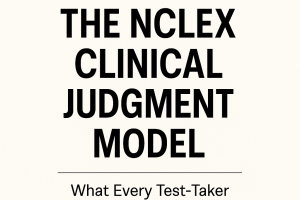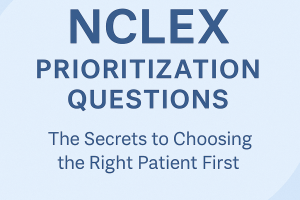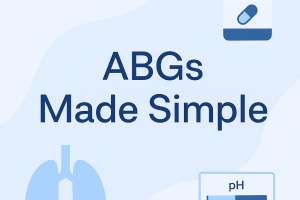Hyperkalemia (High Potassium > 5.0 mEq/L): What Every NCLEX Test-Taker Should Know

Electrolyte imbalances are a hot topic on the NCLEX, and hyperkalemia is one of the most critical ones to understand. Why? Because high potassium levels can lead to life-threatening cardiac issues, and nurses are often on the front line of recognizing and responding to them.
In this post, we’ll break down hyperkalemia for NCLEX prep—covering causes, signs and symptoms, nursing priorities, treatment, and key tips for answering related exam questions.
What Is Hyperkalemia?
Hyperkalemia is a condition where the serum potassium level is above 5.0 mEq/L.
Potassium is essential for nerve conduction, muscle contraction, and—most importantly—maintaining proper cardiac rhythm. When potassium levels are too high, the heart can go into arrhythmias or cardiac arrest.
Normal Potassium Range:
3.5 – 5.0 mEq/L
Hyperkalemia:
> 5.0 mEq/L
Common Causes of Hyperkalemia
Understanding why potassium levels rise is just as important as treating them.
1. Renal Failure
- The kidneys excrete potassium. If they aren’t working, potassium accumulates.
2. Potassium-Sparing Diuretics
- Medications like spironolactone retain potassium.
3. Excessive Potassium Intake
- From supplements or diet, especially in those with kidney problems.
4. Tissue Breakdown
- Trauma, burns, or hemolysis release potassium into the bloodstream.
5. Acidosis
- In acidosis, potassium shifts out of cells and into the blood.
Signs and Symptoms of Hyperkalemia
Think muscle and cardiac dysfunction. Early signs may be subtle, but they can escalate quickly.
Cardiac Symptoms (Most Critical)
- Peaked T waves on ECG
- Widened QRS complex
- Bradycardia
- Ventricular fibrillation
- Asystole (cardiac arrest)
Neuromuscular Symptoms
- Muscle weakness
- Paresthesia (tingling)
- Paralysis (in severe cases)
Gastrointestinal Symptoms
- Nausea
- Abdominal cramping
- Diarrhea
NCLEX Tip:
Always prioritize cardiac monitoring when you see a high potassium level. The biggest risk is sudden cardiac arrest.
Nursing Interventions for Hyperkalemia
1. Stop All Potassium Intake
- Discontinue potassium-rich IV fluids or supplements.
2. Cardiac Monitoring
- Continuous ECG to detect arrhythmias.
3. Administer Medications:
- Calcium gluconate – stabilizes the heart.
- Insulin with glucose – shifts potassium into cells.
- Sodium bicarbonate – used in acidosis.
- Loop diuretics (e.g., furosemide) – promote excretion.
- Sodium polystyrene sulfonate (Kayexalate) – binds potassium in the gut.
- Dialysis – for severe or refractory cases, especially in renal failure.
Foods High in Potassium (to Limit in Hyperkalemia)
- Bananas
- Oranges
- Potatoes
- Tomatoes
- Spinach
- Avocados
- Beans
- Dried fruits
Sample NCLEX Question:
Question:
The nurse is caring for a patient with a potassium level of 6.3 mEq/L. Which of the following actions should the nurse perform first?
A. Administer sodium polystyrene sulfonate
B. Notify the provider
C. Connect the patient to a cardiac monitor
D. Check the patient’s intake and output
✅ Correct Answer: C
Always prioritize cardiac monitoring with high potassium levels to detect and respond to dangerous arrhythmias.
Quick Summary Cheat Sheet:
| Hyperkalemia (K+ > 5.0 mEq/L) | |
|---|---|
| Causes | Renal failure, acidosis, tissue breakdown, meds (K-sparing diuretics) |
| Symptoms | Peaked T waves, muscle weakness, bradycardia, paresthesia |
| Nursing Actions | Stop potassium intake, cardiac monitoring, meds (insulin, calcium gluconate, diuretics) |
| NCLEX Tip | Always monitor the heart first – arrhythmias can be fatal |
Final Thoughts
Hyperkalemia is not just another lab value—it’s a critical nursing emergency that requires fast thinking and quick action. Know the ECG changes. Know the causes. Know the treatments.
When you see a potassium level on the NCLEX, ask yourself:
- Is it high or low?
- Is the heart at risk?
- What’s the safest, most immediate action?
Mastering this topic means you’re one step closer to becoming a nurse who’s ready to respond to real-life emergencies with confidence.






